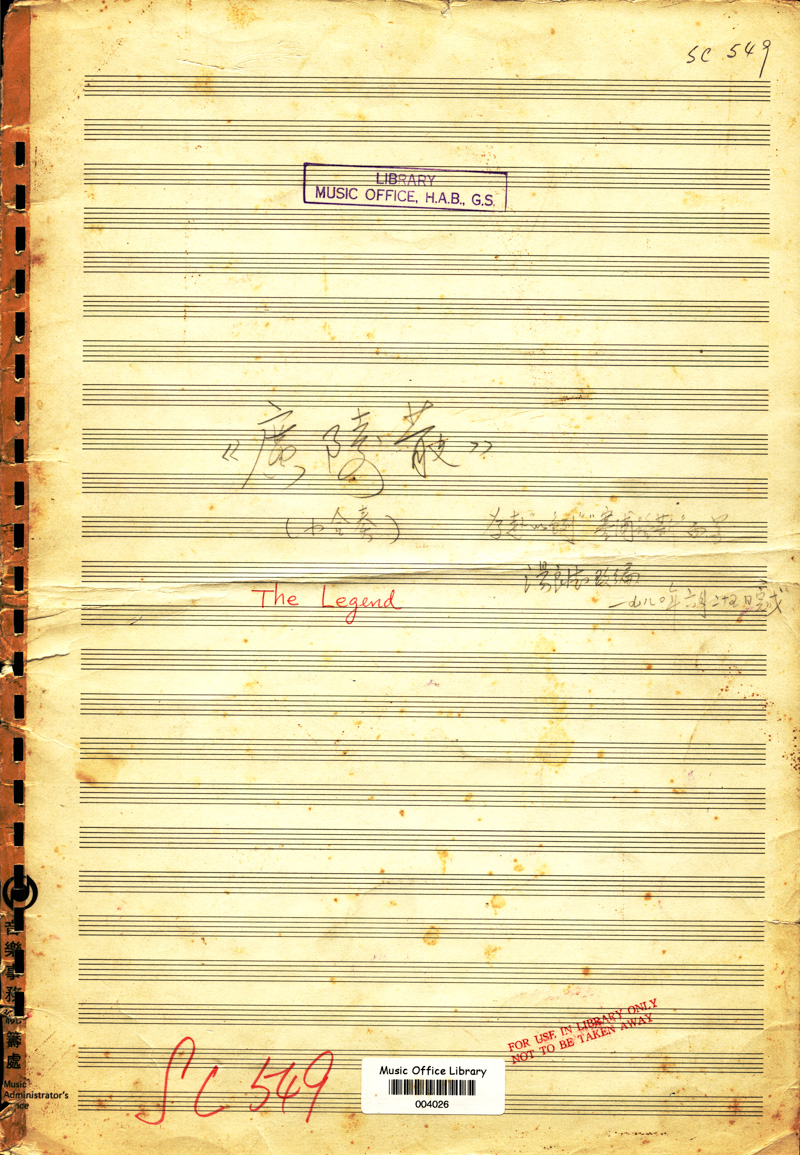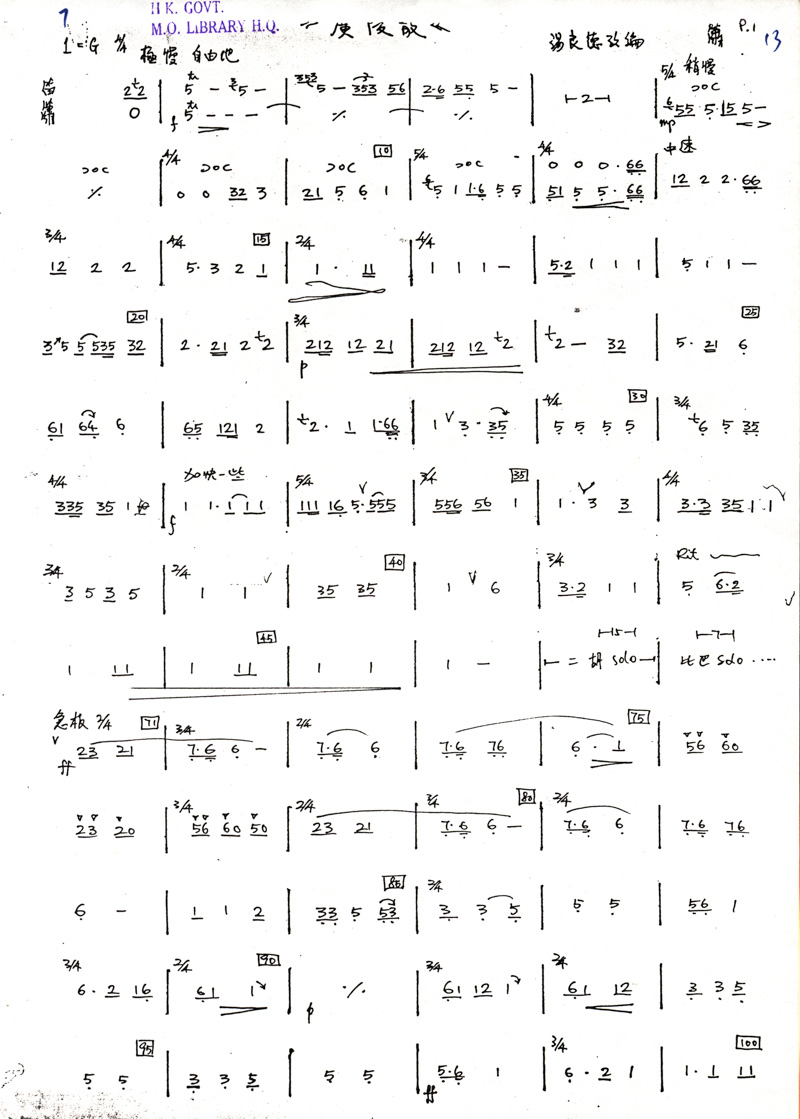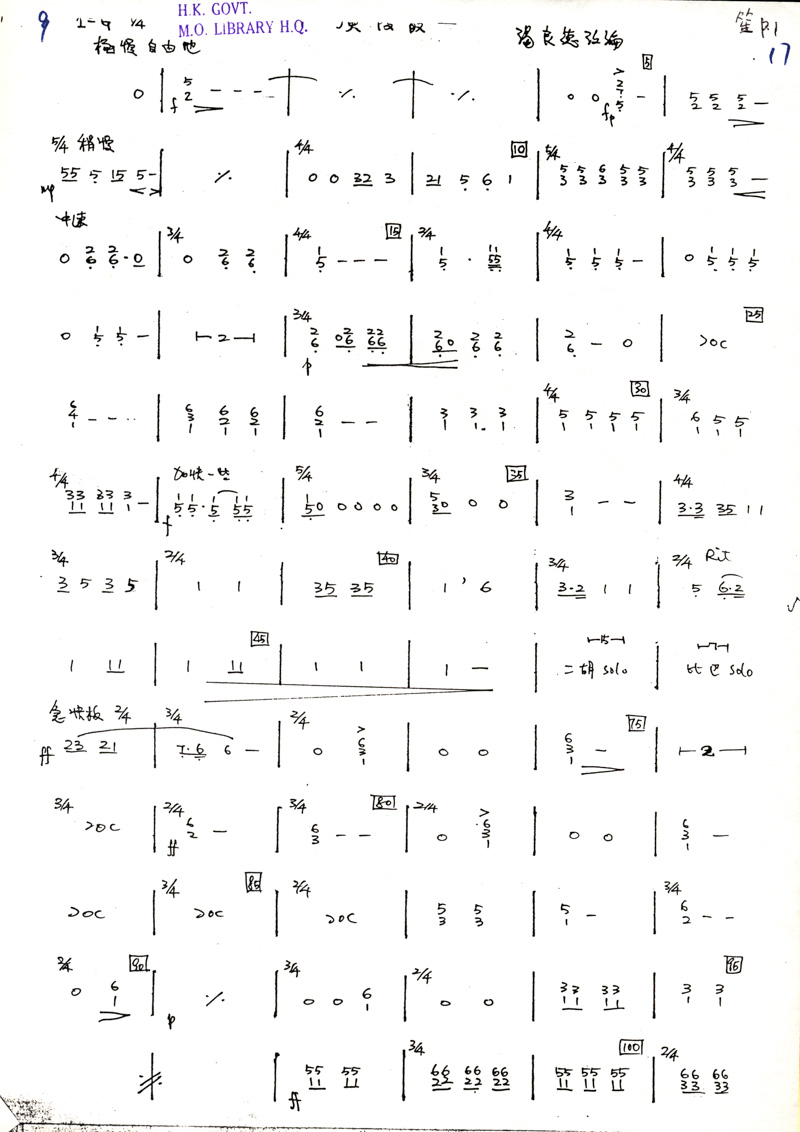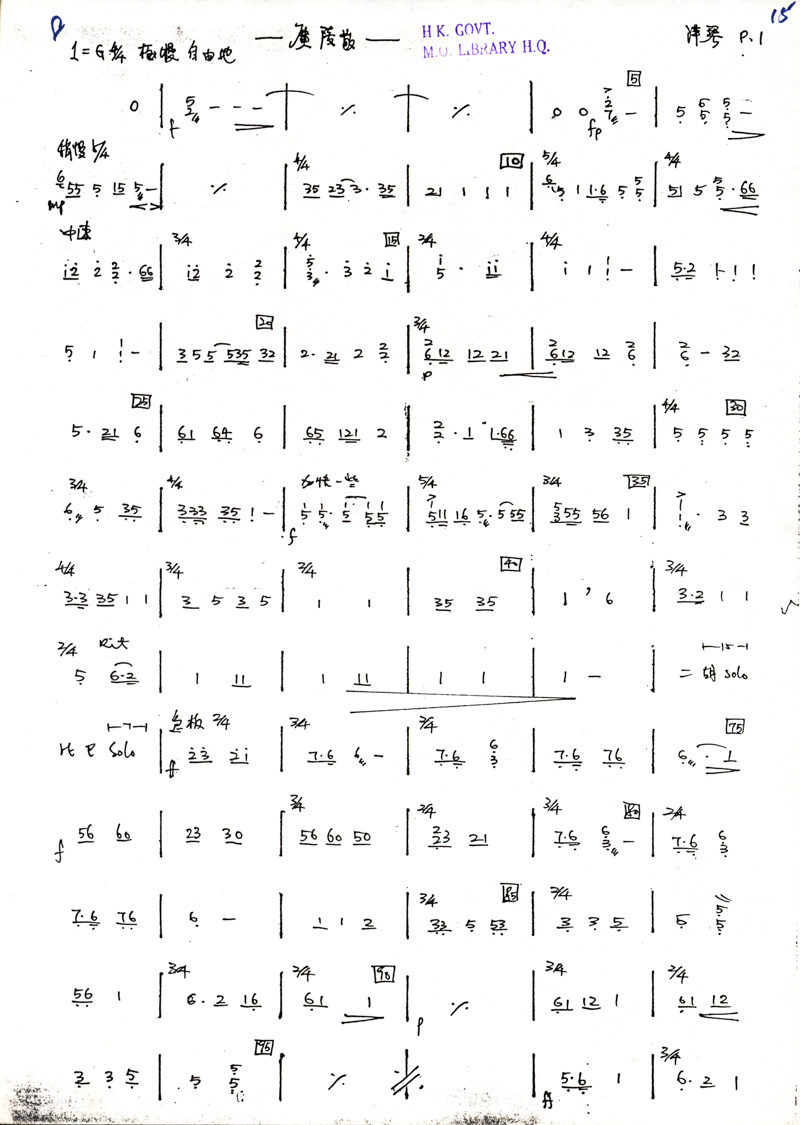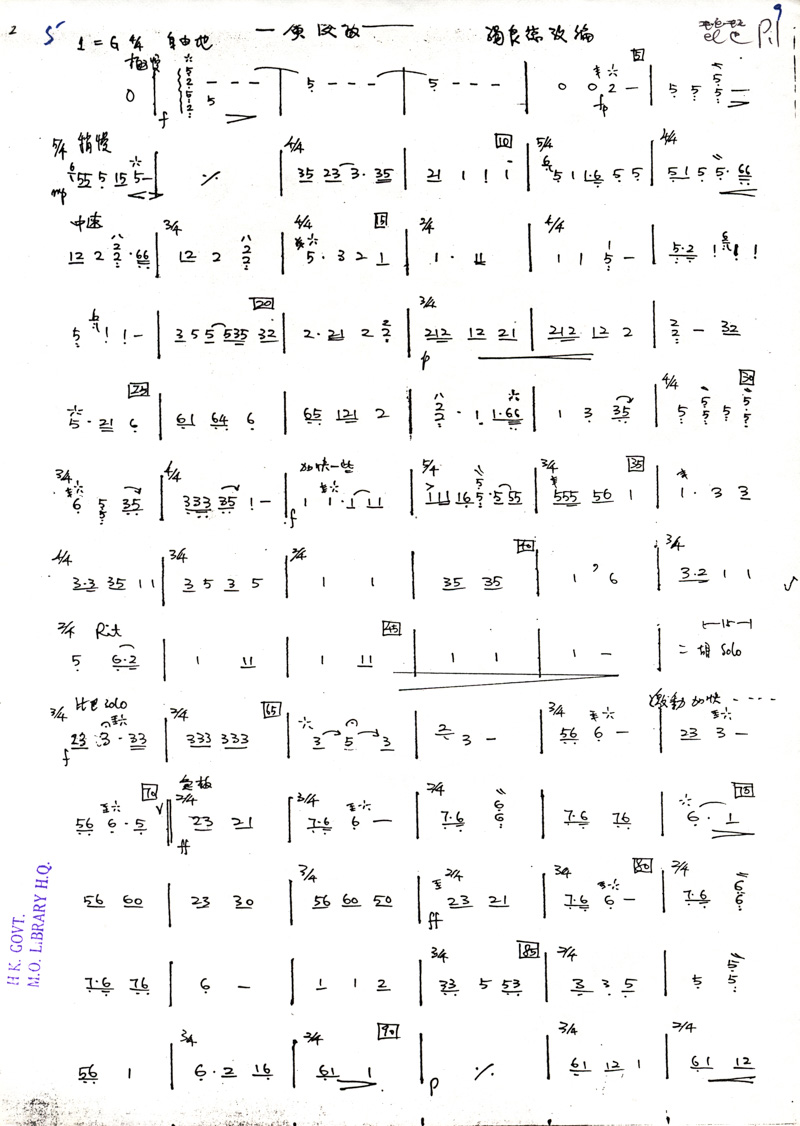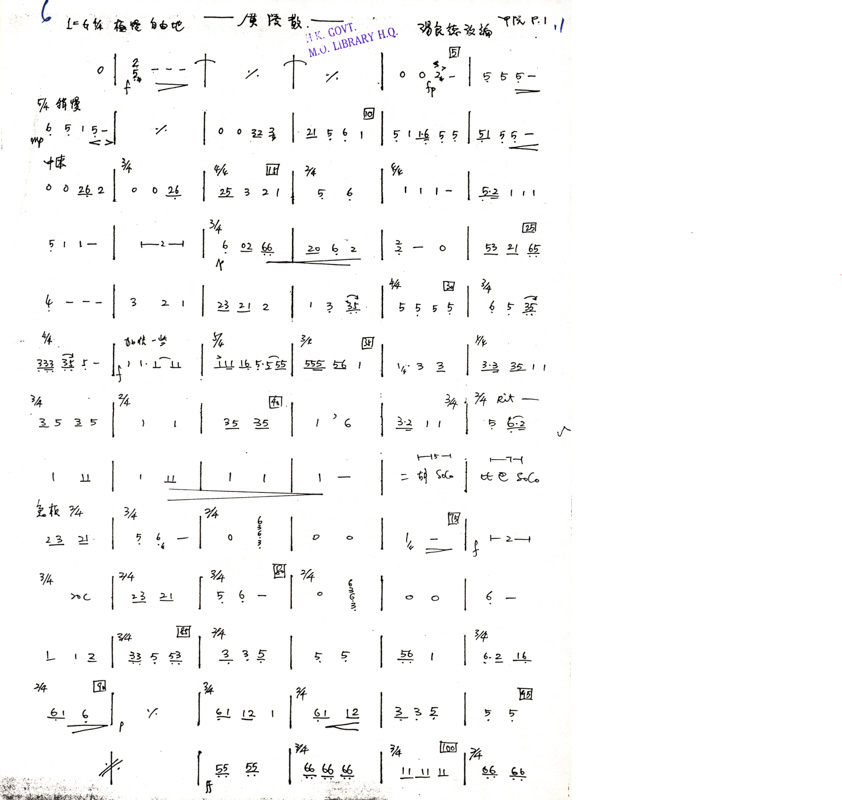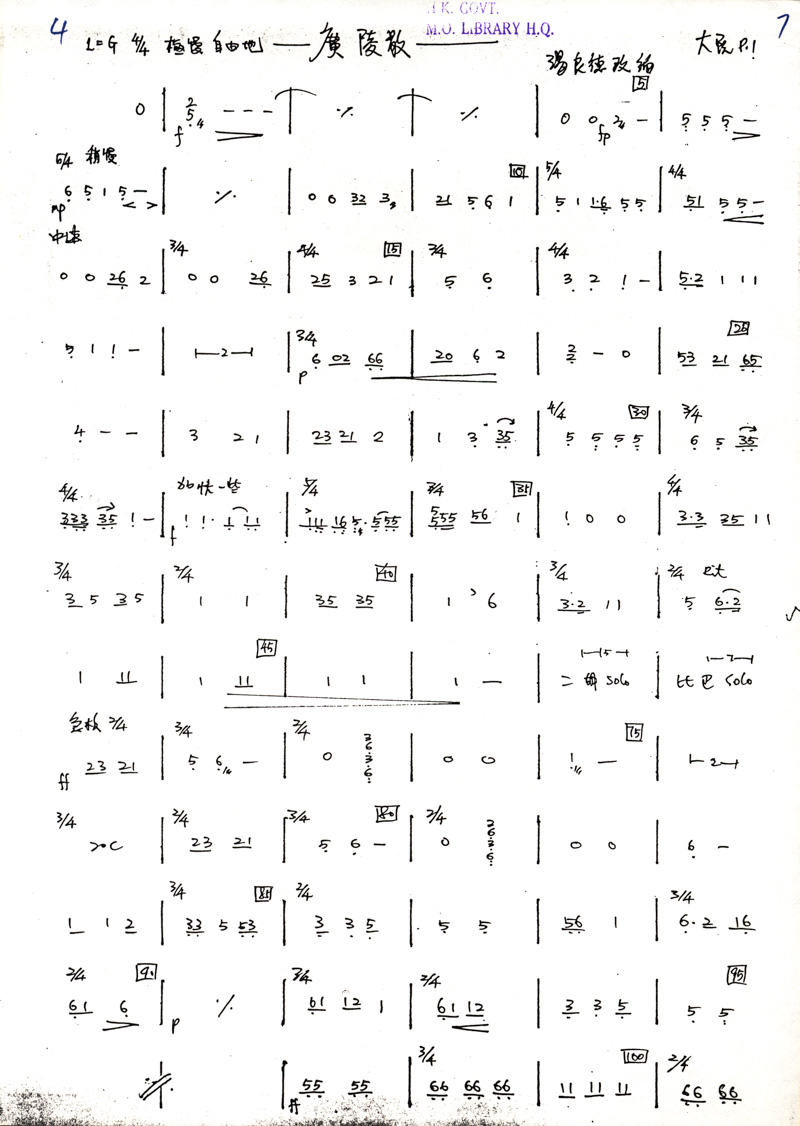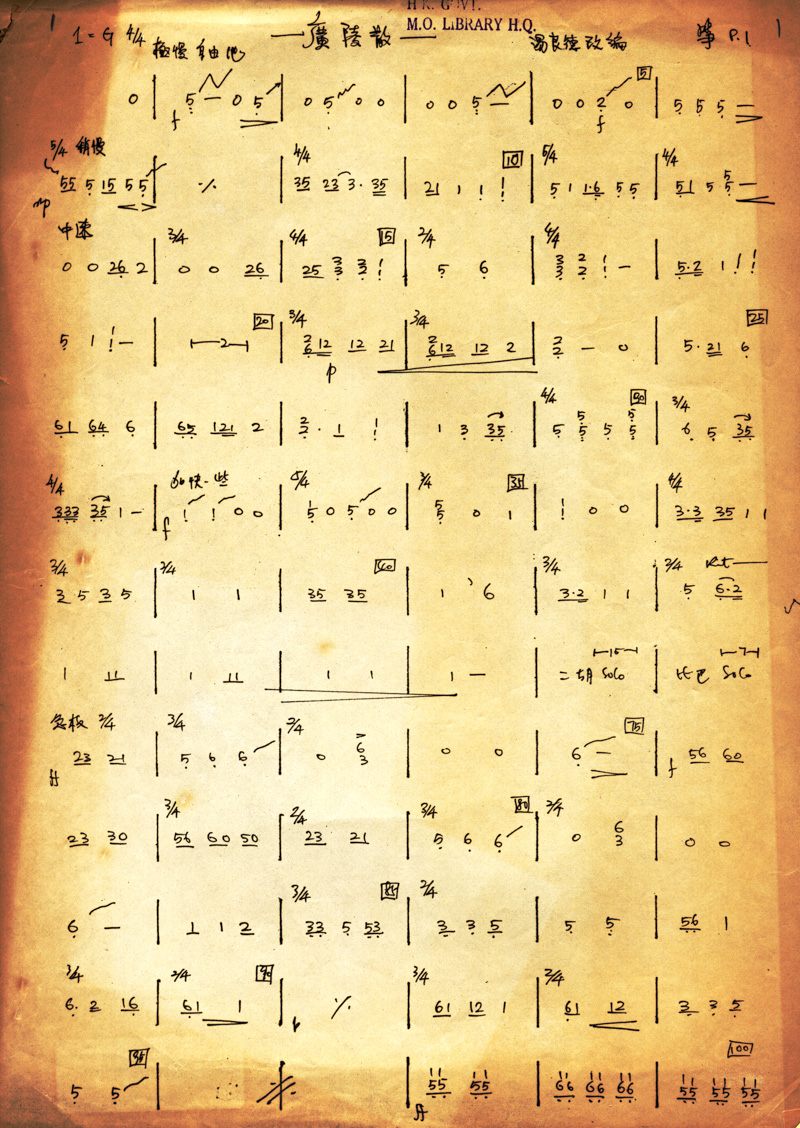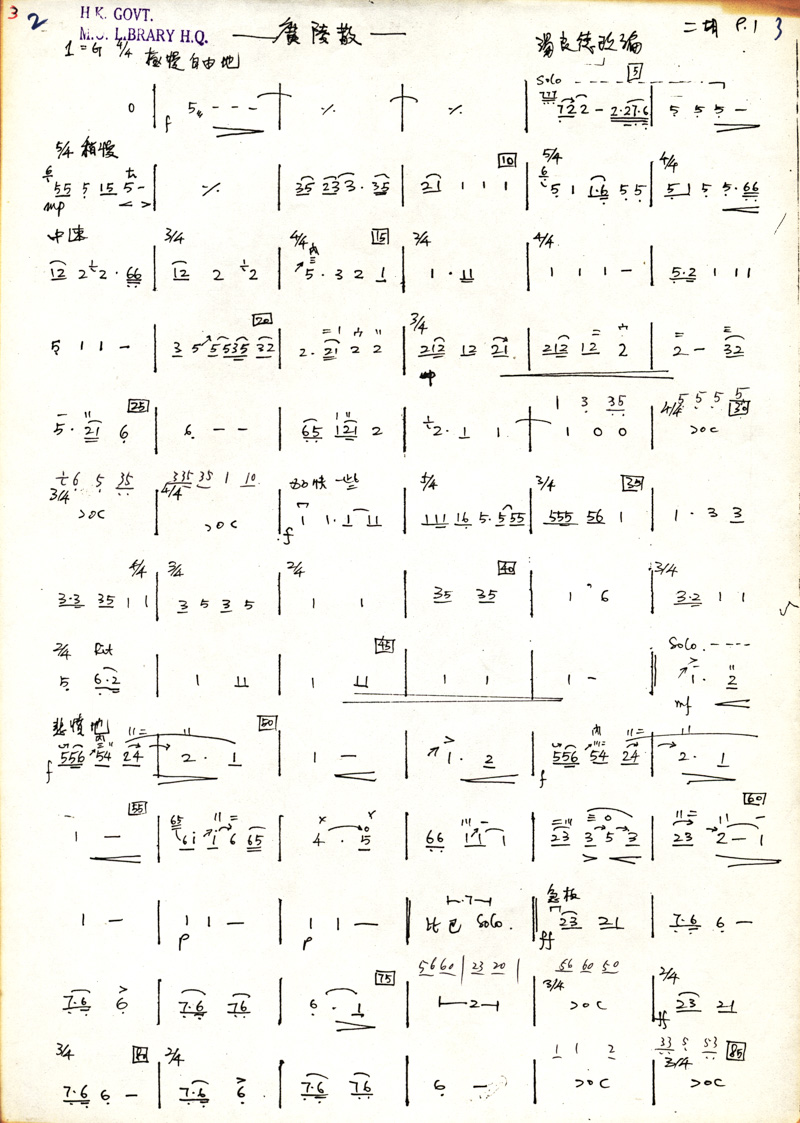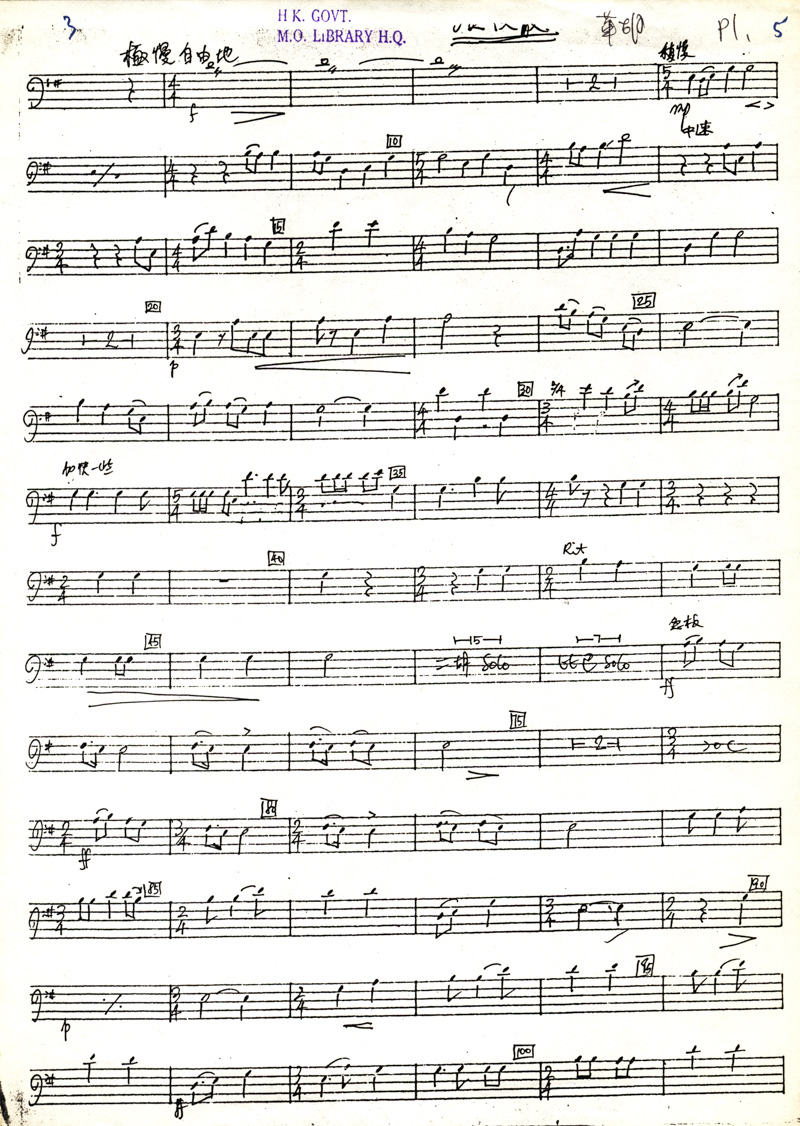Partitura Download
Title: The legend
Arranger:Tong Leung-tak
Year: June 25, 1980
Genre:
- Small ensemble
- Arrangement
Call No.: SC549
Description: Guanglingsan is a classic qin piece with a long and much disputed history. Its earliest extant score is from the qin anthology Shenqi mipu, which was compiled by Prince Zhu Quan (1378–1448) of the Ming Dynasty and published in 1425. The exact origin of Guanglingsan has been a subject of debate. It is most popularly associated with Ji Kang (223–263), arguably the most well-known member of the Seven Sages of the Bamboo Grove who has also been known as a thinker and a music theorist. In Zhu Quan's annotation for the piece, as well as in many writings on qin music throughout history, Ji Kang is said to have learned the piece from a certain ghost and promised not to teach anyone else-for some, it is implied that he was the composer. Later, adversities in his political career brought him a death sentence. In his final moments, he famously played Guanglingsan on the qin for one last time before lamenting that "the music is now lost." With some more questionable elaboration, Zhu claims to have partially inherited Ji's original music and traces his score to the Sui court (581–618). Other sources point to the piece's possible pre-Han origin-many scholars have identified the section headings in the Shenqi mipu score as allusions to the legend of the assassin Nie Zheng of the Warring States period (475–221 BC). In the historical event as recorded in Shi ji, Nie was involved in a political rivalry in the Han court and was hired to assassinate a minister; in a later, more popular iteration of the legend, Nie avenged his father by killing the king of Han (Han wang) while performing qin music in the court. The late-Eastern-Han scholar-official Cai Yong (132/133–192), in his influential treatise Qincao, mentions a qin piece named Nie Zheng ci Han wang and attributes its authorship to the protagonist Nie-many have speculated that Guanglingsan is basically the same piece under a different name. Regardless of its many factual disputes, Guanglingsan has secured its place as a key object of Chinese musical and cultural imagination, particularly for its riveting, almost violent musical sound and its background story about revenge and indignation. Tong Leung-tak's arrangement of Guanglingsan for a Chinese instrumental ensemble (i.e., "The Legend"), included in the program for the Music Office's Israel/Cyprus tour in 1980, is seemingly an adaptation of one of qin master Guan Pinghu's (1897–1967) "interpretations" (dapu) of the original Shenqi mipu tablatures. Rather than featuring all 41 sections in Guan's version, however, Tong's piece is modeled on a condensed version (jieben), featuring only 11 sections (some of them further abridged) and amounting to a performance lasting several minutes. Largely preserving the musical and narrative progression in the original, the piece begins with a relatively slow and pensive segment but gains momentum soon after, building toward a loud and violent climactic moment and reaching a majestic conclusion. It features a combination of winds, plucked strings, and bowed strings and omits instruments in the highest and lowest registers (e.g. liuqin, gaohu, gehu). The piece is mostly heterophonic in texture with the instruments playing the main melody, though it also features erhu and pipa solo passages in the middle.
Note:
- Arrangement of the guqin piece of the same title
- Composed for the Israel and Cyprus tour
Instrumentation: di/xiao (1), sheng (1), yangqin (1), pipa (1), zhong ruan (1), da ruan (1), zheng (1), erhu (1), gehu (1)
